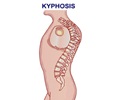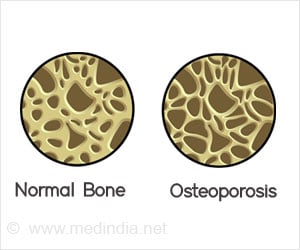SCOPE or Scorecard for Osteoporosis in Europe has been published by a panel of international experts working in cooperation with the International Osteoporosis Foundation (IOF).

The Scorecard presents, measures and compares data in a way that is simple to see and interpret, sets benchmarks, and measures critical indicators of overall performance. SCOPE covers four main indicators of osteoporosis:
- Burden of osteoporosis and fractures, including forecasts for the future
- Policy framework – availability of public health programmes
- Service provision – assessment and treatments of osteoporosis
- Service uptake – e.g. treatment gap, the proportion of men and women at high risk who don’t receive treatment
The Scorecard reveals that countries with a higher risk of fracture and incidence of osteoporosis do not always make the largest investment in fracture reduction and treatment. This indicates that services are not aligned or operating efficiently enough to reduce the risk of fractures, which cost in excess of €37 billion and cause about 43,000 deaths each year in Europe. It is hoped that the scorecard will help to inform a Europe-wide strategy for osteoporosis that aims to reduce fractures, costs and the burden in the population.
Several of the key findings of the Scorecard are:
- The majority of high-risk individuals remain untreated. Less than half of women at high risk of fracture are treated despite the high cost of fractures and the availability of effective medications;
- Facilities and access to testing for osteoporosis, as well as utilization of fracture risk algorithms, are inadequate in the majority of countries;
- In some countries individuals with osteoporosis are restricted from accessing effective treatment options;
- Access to drug treatment that can help prevent fractures varies significantly from country to country;
- Fracture incidence is poorly documented in the EU; national hip fracture registries for both sexes are available in only 15 of the 27 member states and only two countries have data on the incidence of clinical vertebral fractures;
- There is a nearly three-fold range of hip fractures throughout the EU ranging from 198 per 100,000 people in Romania to 574 per 100,000 in Denmark;
"This scorecard draws attention to gaps and inequalities in the provision of primary and secondary prevention of fractures due to osteoporosis in all 27 member states of the EU," said IOF President Professor John Kanis of the WHO Collaborating Centre for Metabolic Bone Diseases, University of Sheffield Medical School. "We call on policymakers at all levels to develop Europe-wide strategies and parallel national strategies to provide coordinated osteoporosis care and to reduce debilitating fractures and their impact on individual lives and the healthcare system."
More than 100 national osteoporosis and bone-related societies in Europe are members of the International Osteoporosis Foundation– and many participated actively in the compilation of the Scorecard.
Speaking at the media launch of the report in Rome, Professor Maria Luisa Brandi, President of IOF member society F.I.R.M.O (Fondazione Raffaella Becagli), stated, " This Scorecard should be used by EU member states to identify which areas of policy and service provision require improvement in order to reduce the current and future burden of fractures. It is evident that for most countries, more data are needed and certain targeted strategies, such as Fracture Liaison Services, must be put in place to identify and treat patients at high risk."
Source-Eurekalert














